
Indigenous place names
Indigenous Peoples’ long-standing relationships with, and sacred responsibilities for, the lands, waters and ice have shaped their identities and influenced their cultures and languages for millennia. Many Indigenous place names have been replaced by colonial names through practices and policies, including some aimed at erasing Indigenous Peoples, their cultures, and languages. By supporting the reclamation of Indigenous place names and the use of Indigenous languages in the sites it plays a role in administering, Parks Canada is taking steps toward reconciliation.
Explore Indigenous language names in places Parks Canada helps administer. Learn more about the words, their meaning, and the Peoples who speak them.
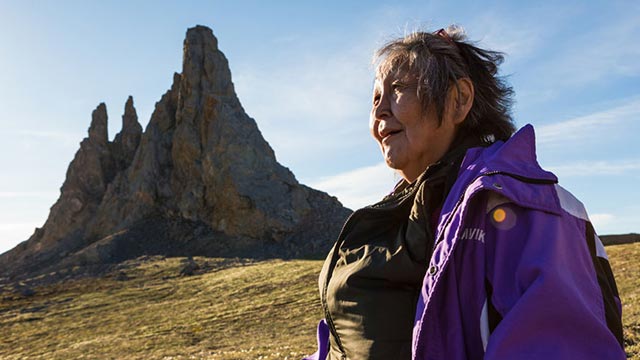
Ivvavik National Park
Yukon
Ivvavik – Eev-vah-veek
Ivvavik means "a place for giving birth, a nursery" in Inuvialuktun, the language of the Inuvialuit, the Inuit of the Western Arctic.
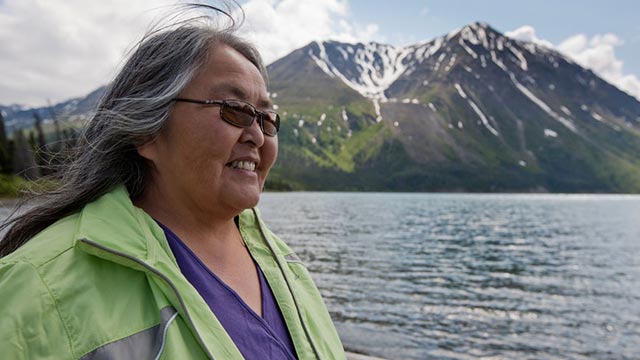
Kluane National Park and Reserve
Yukon
Kluane - Clue-ah-knee
The Southern Tutchone name for Kluane Lake is “Łù’àn Män” meaning “big fish lake.” Coastal Tlingits, who were trading partners, called the area “ùxh-àni” meaning “whitefish country.” The name Kluane was derived from these two names by early settlers.
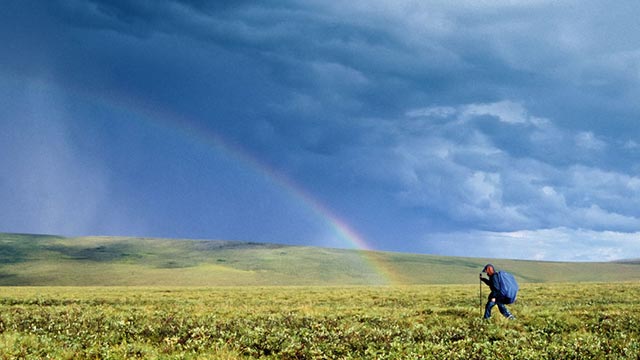
Vuntut National Park
Yukon
Vuntut - Voon-tuht
Vuntut Gwitchin translates to “people of the lakes” – Gwitchin meaning people; Vuntut referring to Van Tat, the Old Crow Flats, a network of two thousand plus shallow lakes. For countless generations, Vuntut Gwitchin have lived in the Old Crow Flats and Porcupine River areas in the northern Yukon.
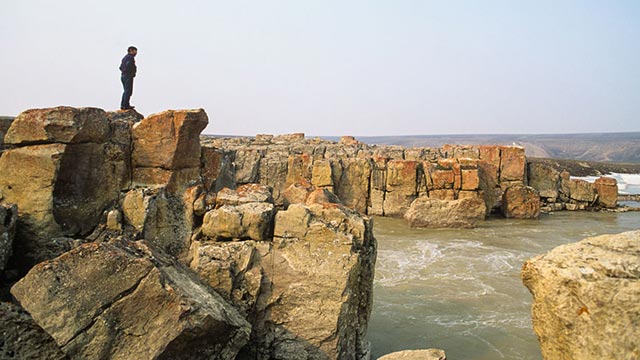
Aulavik National Park
Northwest Territories
Aulavik – Owla-vik
Aulavik, meaning “place where people travel” in Inuvialuktun, protects more than 12,000 square kilometres of arctic lowlands on the north end of Banks Island. The park encompasses a variety of landscapes from fertile river valleys to polar deserts, buttes and badlands, rolling hills, and bold seacoasts.
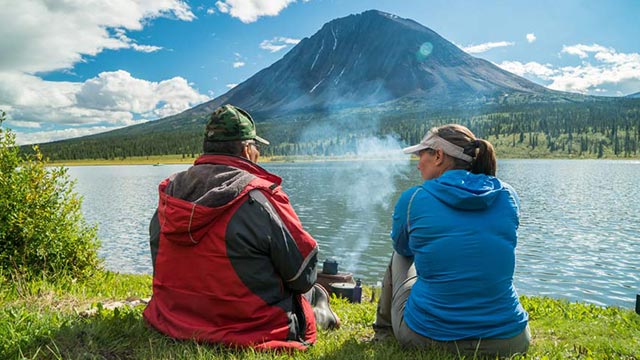
Nááts'ihch'oh National Park Reserve
Northwest Territories
Nááts’ihch’oh – NAT-chee-oh
The expression “Nááts’ihch’onOh” in the Shúhtagot’ine language refers to the mountain’s unique jagged shape and sharp peak resembling the spine of a porcupine.
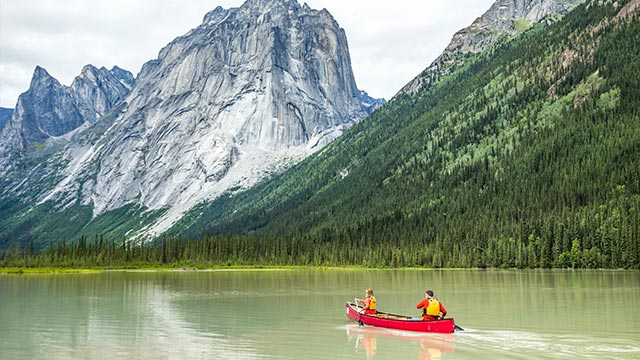
Nahanni National Park Reserve
Northwest Territories
Nahanni – na-HAN-nee
Home of Dehcho First Nations, whose ancestors have called Nah?ą Dehé home since time before memory.
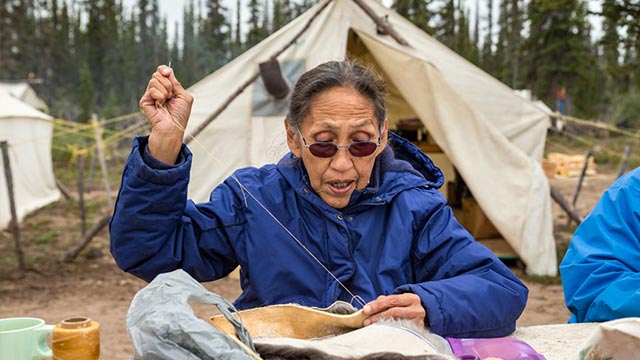
Saoyú-Ɂehdacho National Historic Site
Northwest Territories
Saoyú-Ɂehdacho - Sahw-you Eh-da-choh
Saoyú and Ɂehdacho mean “Grizzly Bear Mountain” and “Scented Grass Hills” respectively. Saoyú-Ɂehdacho National Historic Site celebrates the traditional lifestyles of the Sahtúgot’įnę – “the people of the Sahtú.”

Tuktut Nogait National Park
Northwest Territories
Tuktut Nogait – Took-toot Noo-guy-it
Tuktut Nogait means "young caribou" in Inuvialuktun, the language of the Inuvialuit. The name refers to a young caribou from the time it drops, wobbly-footed, on the tundra, until roughly one year of age. One of the purposes for the park’s establishment was the protection of Bluenose-West and Bluenose-East caribou herds.
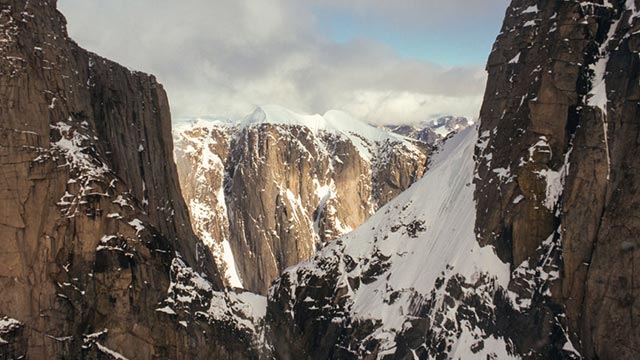
Auyuittuq National Park
Nunavut
Auyuittuq - Ow-you-eet-took
The Inuktitut word “auyuittuq” means “the land that never melts.” Auyuittuq epitomizes the majestic beauty of the Arctic. Imposing landscape of jagged mountain peaks, deep valleys, perpetual ice and fjords with vertical walls symbolize the Inuit belief that time is eternal.
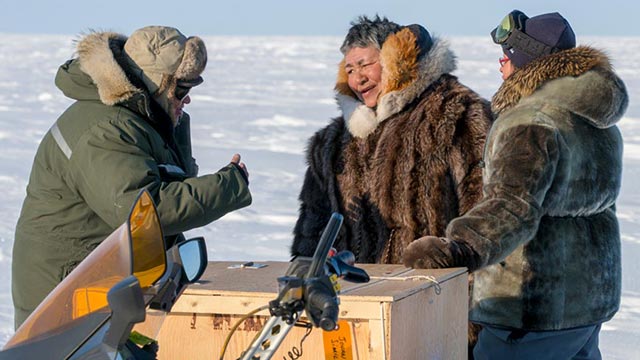
Qausuittuq National Park
Nunavut
Qausuittuq - Kow-soo-ee-took
One of Canada’s newest national parks, Qausuittuq means “place where the sun doesn’t rise” in Inuktitut, in reference to the fact that the sun stays below the horizon for several months in the winter at this latitude.
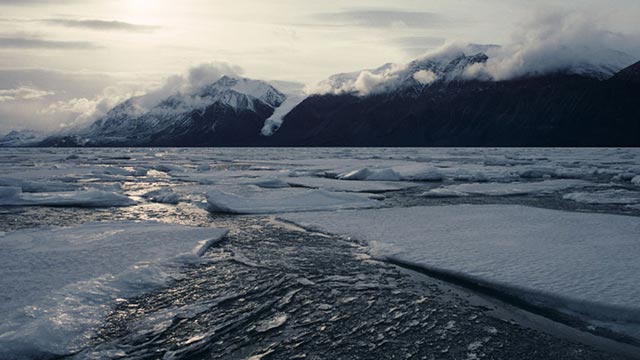
Quttinirpaaq National Park
Nunavut
Quttinirpaaq - Koo-tin-ir-pa-ak
In Inuktitut, “Quttinirpaaq” means “highest,” “way up there” or “top of the world.” This is fitting, as Quttinirpaaq is the northernmost national park in Canada.

Sirmilik National Park
Nunavut
Sirmilik – Seer-mee-leek
In Inuktitut Sirmilik means “place of glaciers,” as it represents Bylot Island’s plethora of glaciers and ice caps.
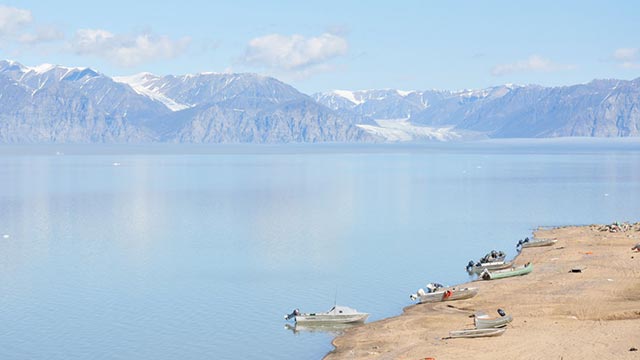
Tallurutiup Imanga National Marine Conservation Area
Nunavut
Tallurutiup Imanga - Tal-loo-roo-tee-oop Ee-man-ga
Tallurutiup Imanga is an area that has been used since time immemorial by the Inuit. “Tallurutiup,” the Inuktitut term for Devon Island, represents the idea of a woman’s chin with tattoo marks, likely a reference to the appearance of certain streaks on the land. “Imanga” means a body of water.
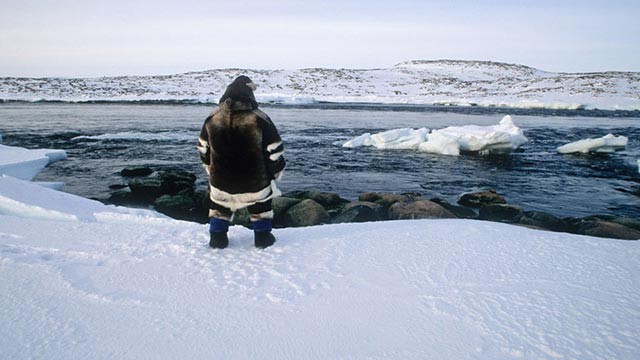
Ukkusiksalik National Park
Nunavut
Ukkusiksalik - Oo-koo-sik-sa-lik
Ukkusiksalik is an Inuktitut term meaning “place where there is stone to carve pots and oil lamps.” The park is a landscape alive with the stories of generations of Inuit, abundant wildlife, and striking vistas.
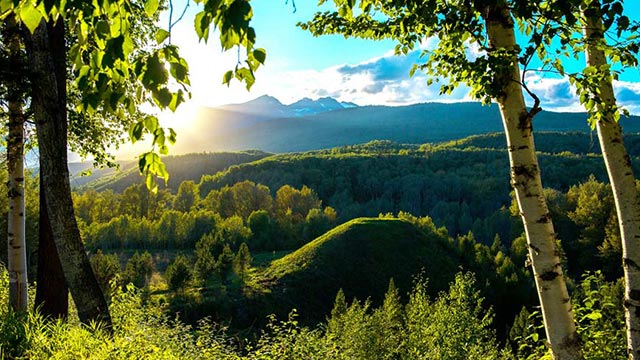
Gitwangak Battle Hill National Historic Site
British Columbia
Gitwangak – Git-wan-gaa
Gitwangak means “people of the place of rabbits.” Gitwangak is the correct Gitsenimx language spelling of the name of the First Nation that built the fort in the 18th century. Battle Hill is the name many locals use to describe the site.
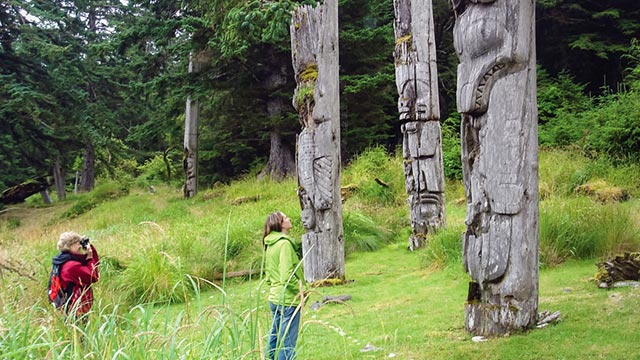
Gwaii Haanas National Park Reserve, National Marine Conservation Area Reserve, and Haida Heritage Site
British Columbia
Gwaii Haanas - Gw-eye Haa-nus
Gwaii Haanas means “islands of beauty” in Xaayda Kil, the Skidegate based dialect of the Haida language. A Haida homeland, Gwaii Haanas is steeped in natural beauty and spirituality. This is a place where the land, sea, and people have always been connected; Gina ‘waadlux̱an gud ad kwaagid: everything depends on everything else.
An archipelago situated off the north Pacific coast, Gwaii Haanas is known for its diverse ecosystems, distinct flora and fauna, living Haida culture, and cooperative management model.
Visit Gwaii Haanas National Park Reserve and Haida Heritage Site
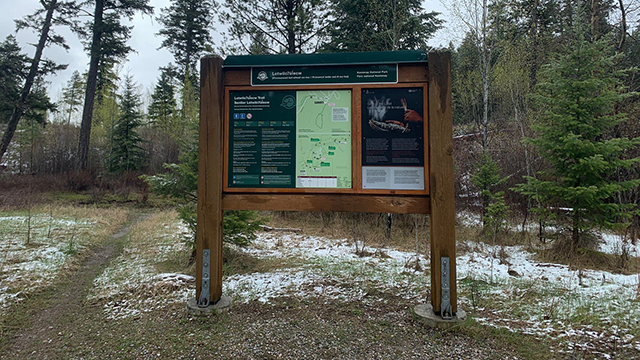
Letwilc7úl̓ecw – hiking trail in Kootenay National Park
British Columbia
Letwilc7úl̓ecw - led-wheel-oo-loo
In 2024, Shushwap Band and Parks Canada collaborated to honour Secwépemc culture by renaming this hiking trail. The name Letwilc7úl̓ecw can be translated as “healing place” or “getting better place,” alluding to the nearby mineral-rich Radium Hot Springs. The trail features interpretive panels on medicinal plants of cultural importance to Secwépemc people.
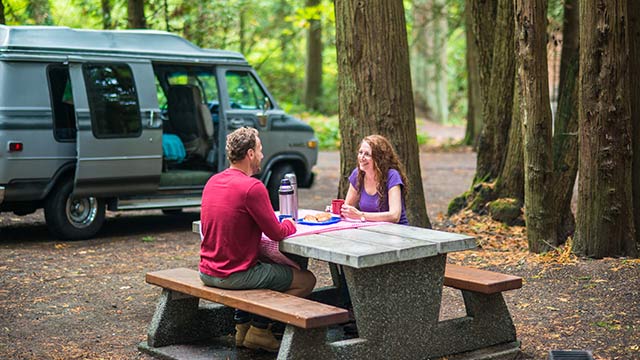
SMONEĆTEN Campground – Gulf Islands National Park Reserve
British Columbia
SMONEĆTEN – smah-nitch-tin
In 2021, W̱SÁNEĆ Leadership Council and Gulf Islands National Park Reserve collaborated to rename McDonald Campground. The new name, in the W̱SÁNEĆ language, means “place of pitch.”
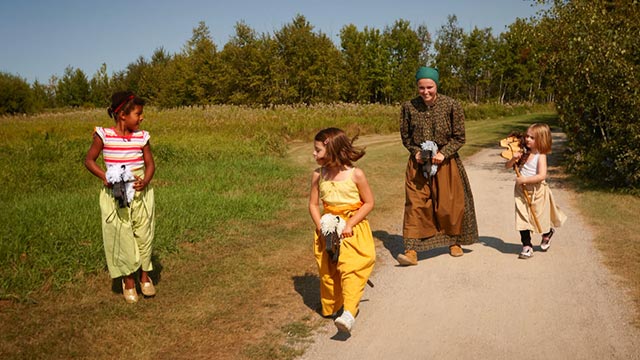
Batoche National Historic Site
Saskatchewan
François-Xavier Letendré dit Batoche was an astute entrepreneur and considered the founder of the Métis settlement along the South Saskatchewan River. The Métis community of Batoche became known by his name when, in 1872, Xavier opened a ferry crossing and built a store at this location.
Historical documents indicate the name “Batoche” was a secondary surname given to men in the Letendré French Métis family during the 18th century. It is unclear exactly what “Batoche” meant as a secondary surname but it is thought to be either a derivative of Baptême (Baptism), a minor cuss word or oath of French-Canadian dialect. By Xavier’s time, Batoche had become somewhat of a family nickname.
Batoche National Historic Site commemorates the history of the Métis community of Batoche, home of Métis culture and heritage, as well as the armed conflict between the Canadian government and the Métis provisional government in 1885.

Wapusk National Park
Manitoba
Wapusk – Wah-puhsk
Wapusk is the Cree word for "white bear," and as the meaning indicates, the 11,475-square-kilometre (4,430 sq mi) park protects one of the world's largest known polar bear maternity denning areas.

Pukaskwa National Park
Ontario
Pukaskwa - Puk-a-saw
There are many spellings of the word “Pukaskwa” and many stories about the meaning of the word. Some contend that the word is descriptive terminology related to cleaning fish. Others suggest it could mean “eaters of fish,” “something evil” or, in contrast, “safe harbour.” Today, the word has become synonymous with the wild shoreline of Lake Superior known as Pukaskwa National Park.
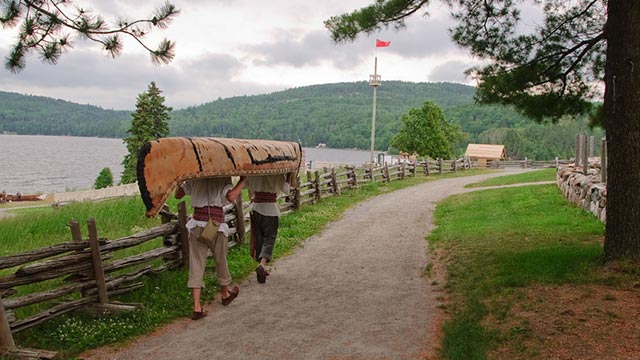
Obadjiwan-Fort Témiscamingue National Historic Site
Quebec
Obadjiwan – o-BAD-gee-wan
Obadjiwan means “the strait where the current flows” in Anishinabemowin, the language of the people who have called this site home for more than 6,000 years. It is a burial site for Ancestors of the Timiskaming First Nation. For nearly two centuries, Obadjiwan–Fort Témiscamingue was also a theatre where English and French rivals fought to control the fur trade. This trading post was where trappers came to sell their furs to merchants and traders who shipped them on to Europe.
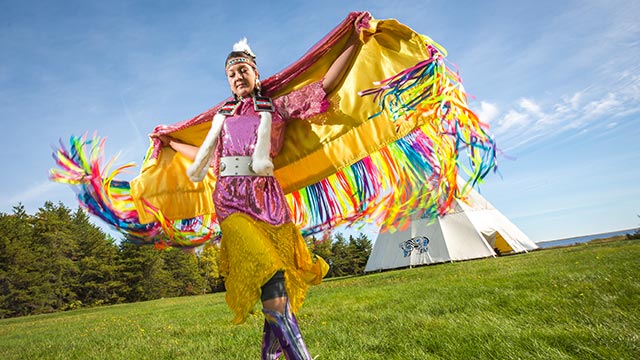
Kouchibouguac National Park
New Brunswick
Kouchibouguac – Koo-she-boo-gwak
Kouchibouguac, meaning “river of long tides” in Mi’kmaq, is where fresh and salt water meet.
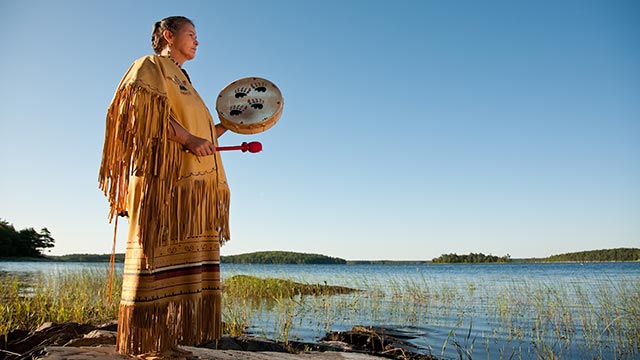
Kejimkujik National Park and National Historic Site
Nova Scotia
Kejimkujik – Ke-jim-koo-jik
The origin of the word “Kejimkujik” is undoubtedly Mi’kmaq, most likely meaning “lake of good spirits” or “lake of fairies.”
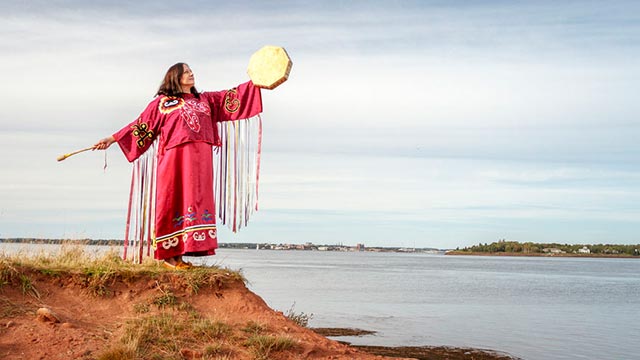
Skmaqn - Port-la-Joye - Fort Amherst National Historic Site
Prince Edward Island
Skmaqn – Skah-MAH-kin
Skmaqn is a Mi’kmaq word meaning “the waiting place.” The site’s name was changed to add Skmaqn in 2018 to honour its historic and contemporary Indigenous connections.
Visit Skmaqn - Port-la-Joye - Fort Amherst National Historic Site

Akami-Uapishkᵁ-KakKasuak-Mealy Mountains National Park Reserve
Newfoundland and Labrador
Akami-Uapishkᵁ-KakKasuak – Ekami-whapiskᵘ Kak-Ka-suak
The traditional names of Mealy Mountains are Akami-Uapishkᵁ, an Innu word meaning “White Mountains across” and KakKasuak, a Labrador Inuit word for mountain. For Innu, Inuit, and others, the landscapes of this outstanding natural region hold great cultural significance.
Visit Akami-Uapishkᵁ-KakKasuak-Mealy Mountains National Park Reserve
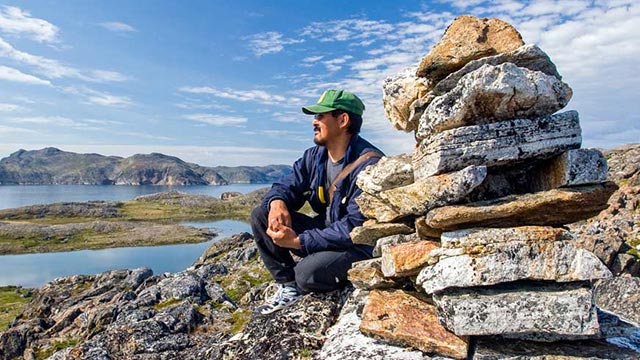
Torngat Mountains National Park
Newfoundland and Labrador
Torngat – Torn-gaht
Torngat Mountains National Park is the traditional homeland of Inuit of Labrador and Nunavik. Its name comes from the Inuit word Torngait, meaning “place where the spirits dwell.” Inuit have traveled and lived among the deep fjords, towering mountains and wide valleys of this land for centuries, following the migratory paths of the whale, polar bear, and caribou.
- Date modified :